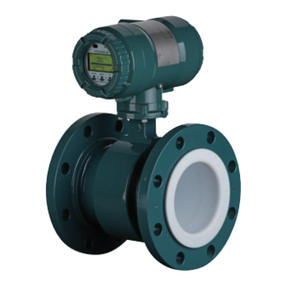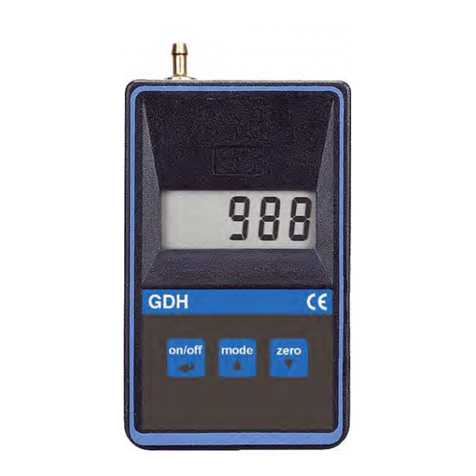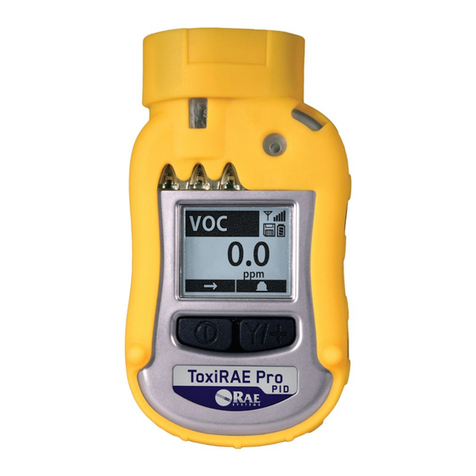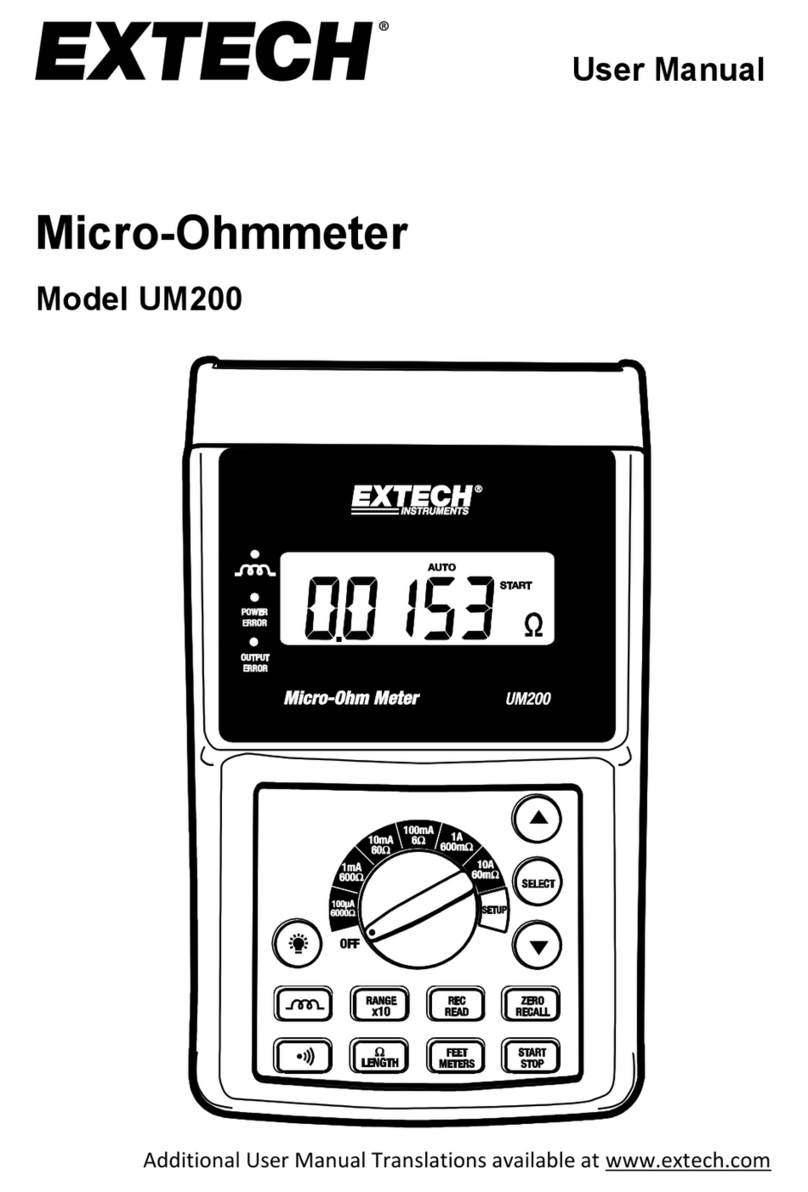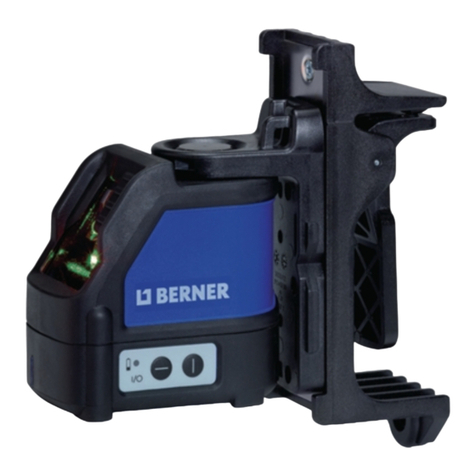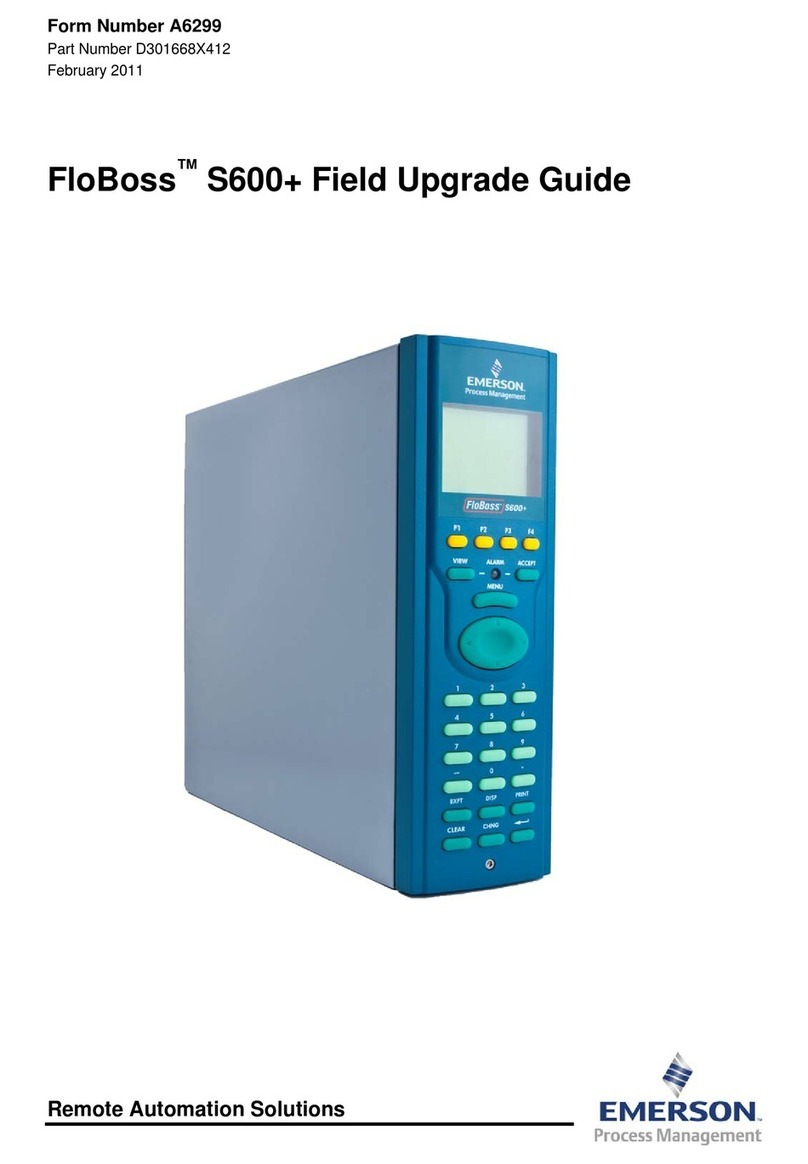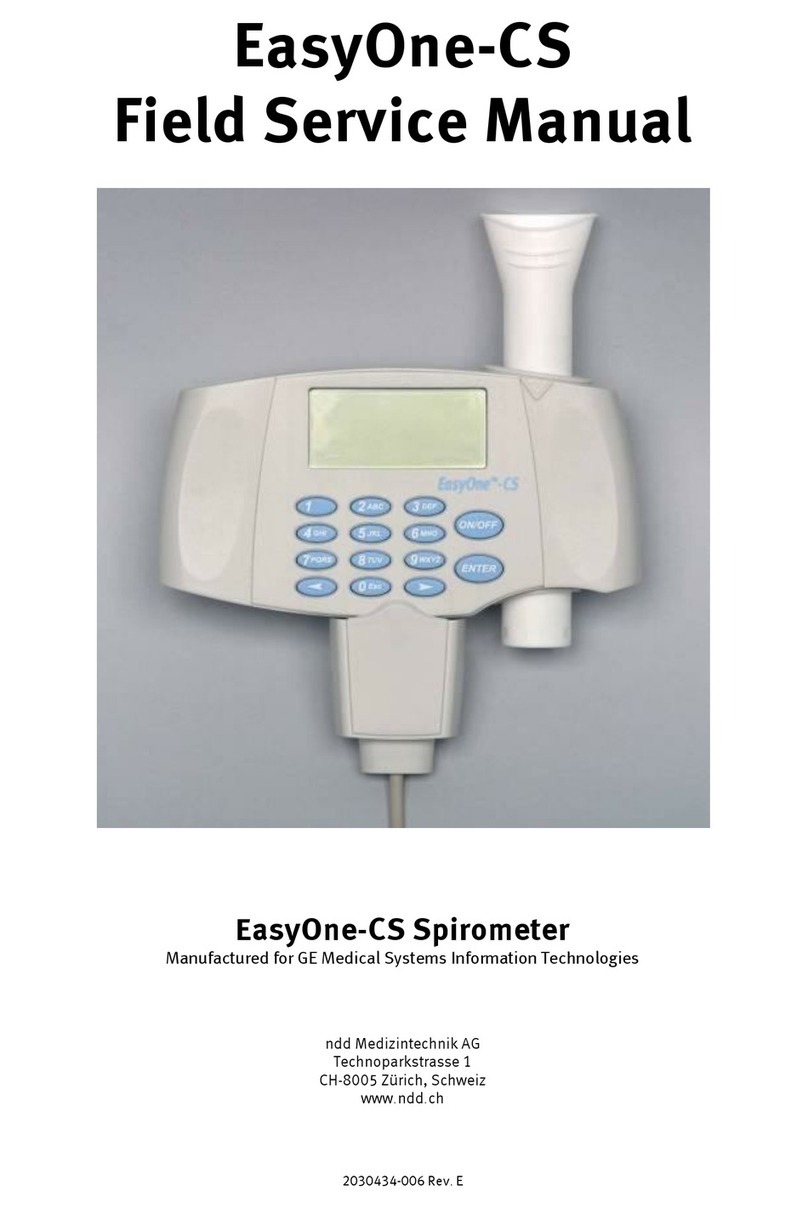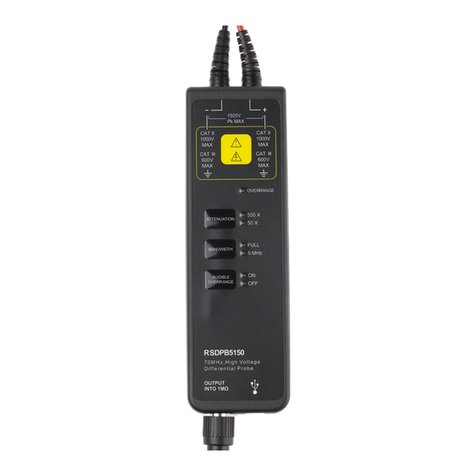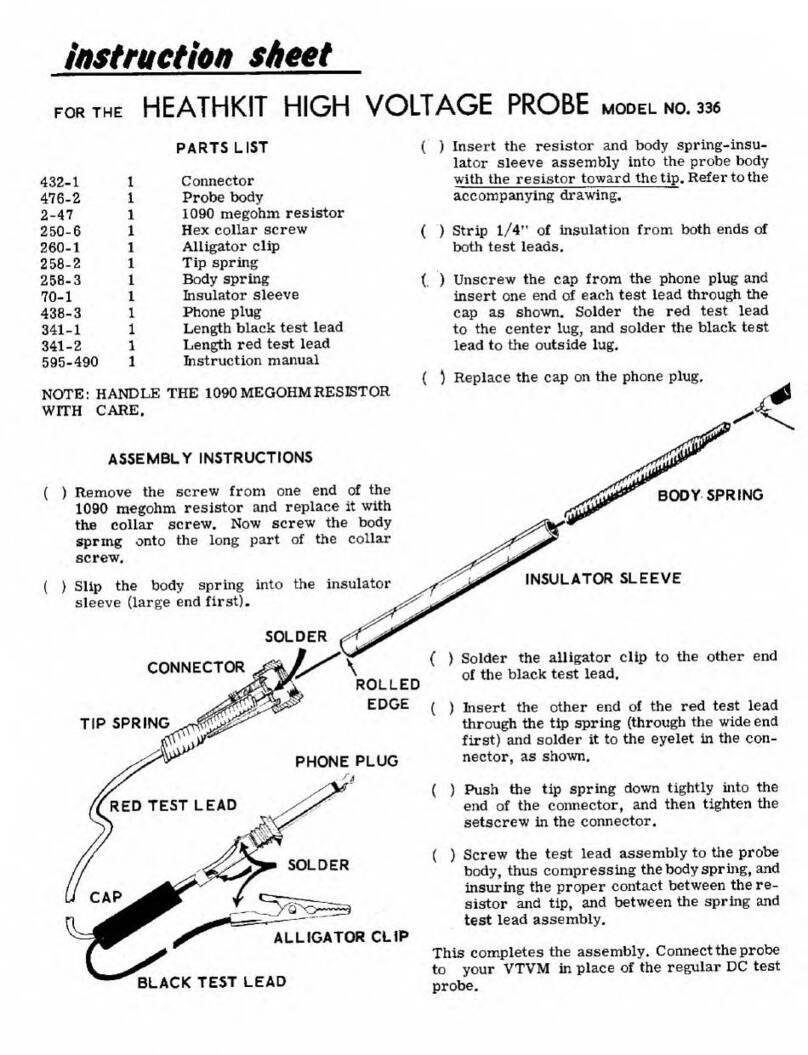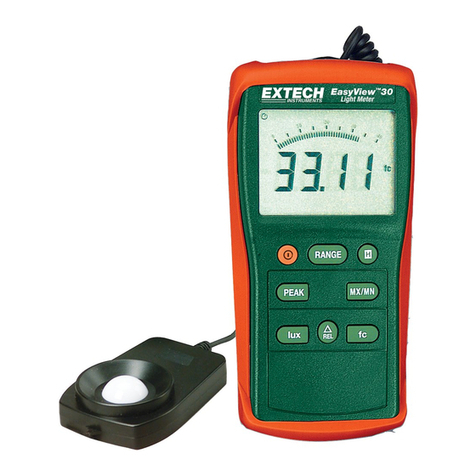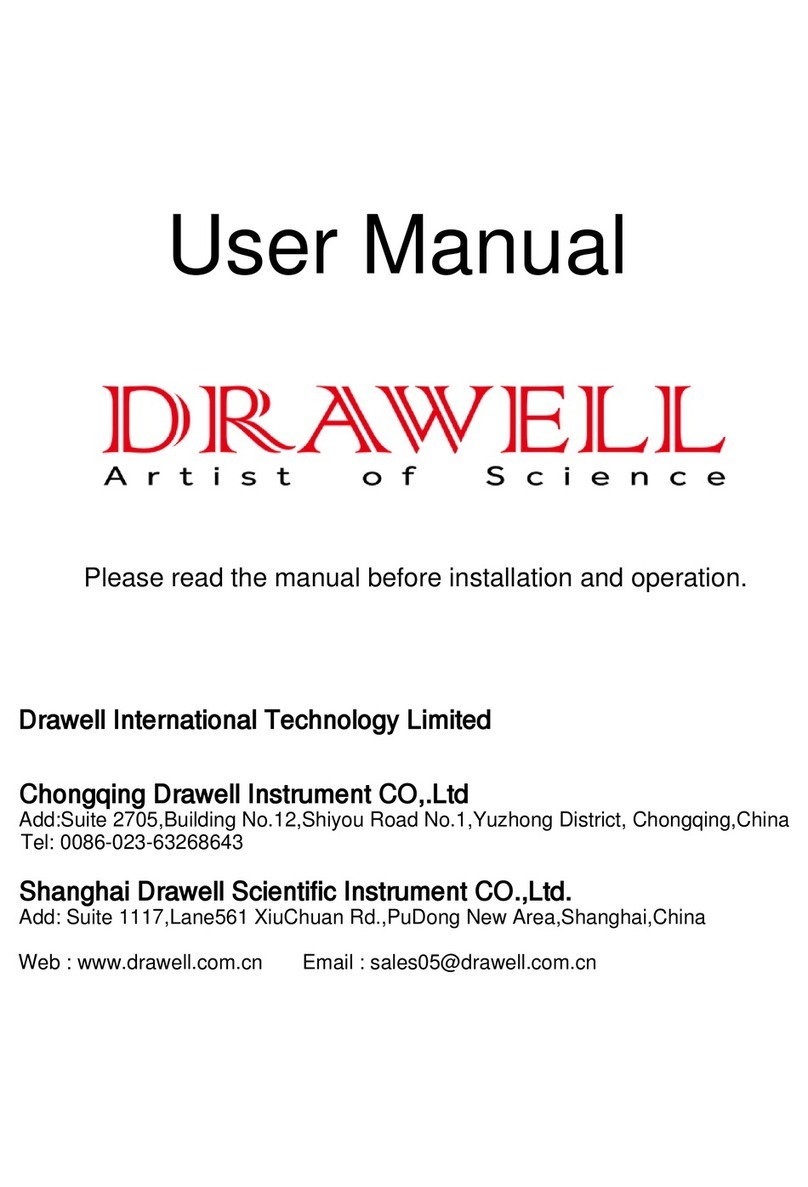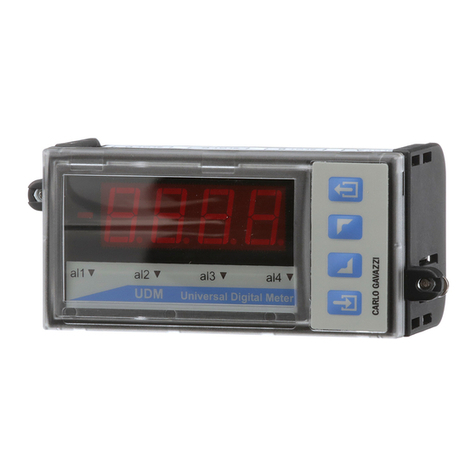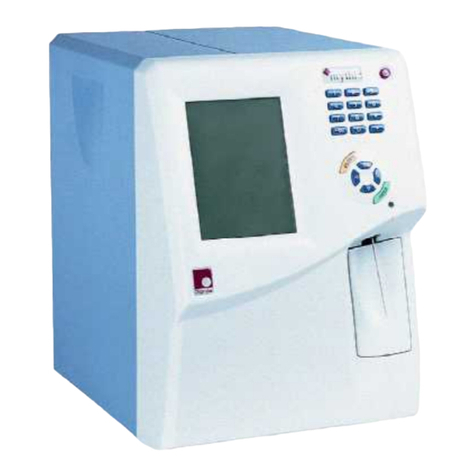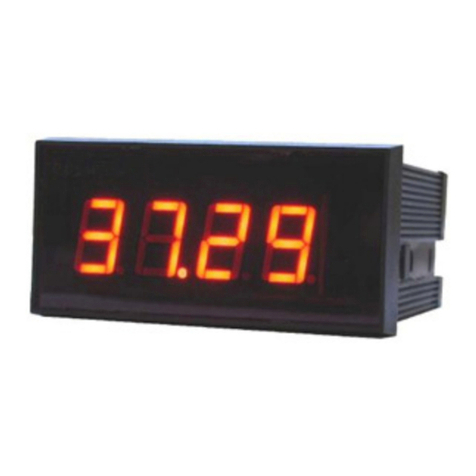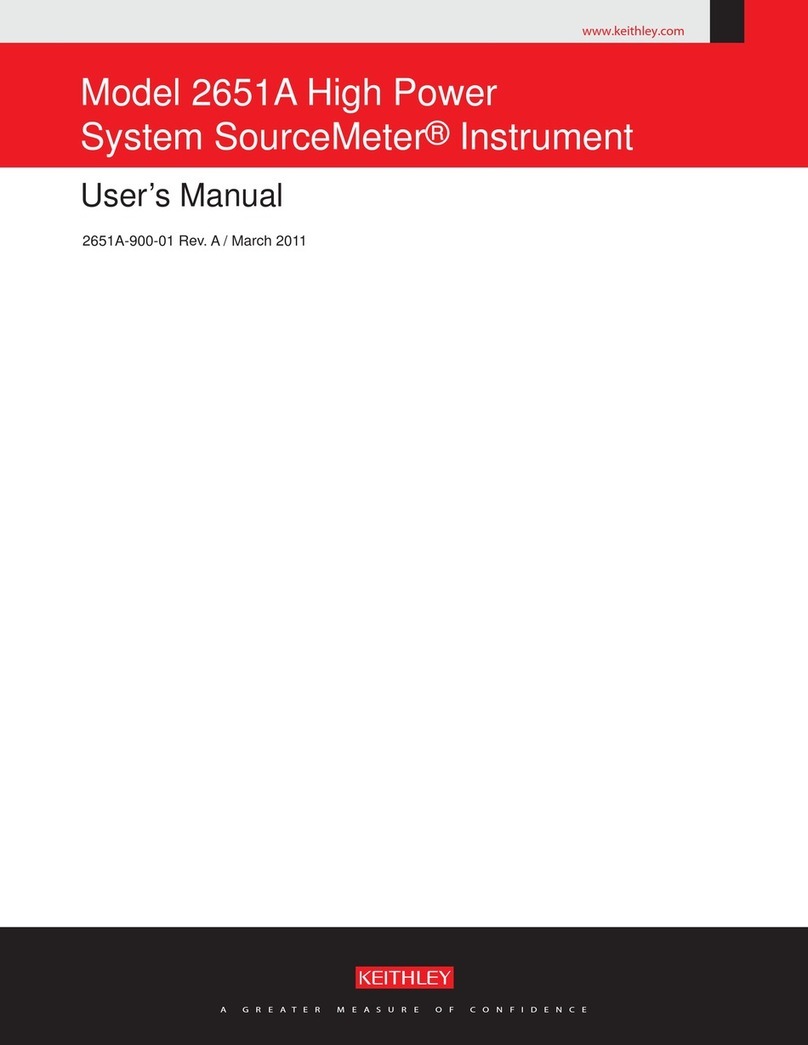Stock DISOCONT Tersus DT-9 User manual

DISOCONT® Tersus (DT-9)
DT-9 Configuration and Operations Manual
VCU 20103
STOCK EQUIPMENT COMPANY
16490 Chillicothe Rd.
Chagrin Falls, OH 44023
(440) 543-6000
FAX (440) 543-6839
24 Hrs. (800) 628-3347
e-mail address: sales@stockequipment.com
BVI6411GB; February, 2010
Revision B


DISOCONT® Tersus (DT-9) Configuration and Operations Manual
©Schenck Process Group
i
1 ABOUT THIS MANUAL ......................................................................................... 5
2 SAFETY INSTRUCTIONS...................................................................................... 7
3 OVERVIEW............................................................................................................. 9
3.1 What is the DISOCONT Tersus/DT-9? .......................................................................................... 9
3.2 Definitions ....................................................................................................................................... 9
3.3 Measuring Principle ..................................................................................................................... 10
3.4 Operating Modes - Remote.......................................................................................................... 12
3.4.1 Gravimetric............................................................................................................................... 12
3.4.2 Volumetric ................................................................................................................................ 12
3.4.3 Volumetric Control ................................................................................................................... 12
3.5 Operating Modes – OFF/Maintenance ........................................................................................ 12
4 DT-9 SETUP......................................................................................................... 13
4.1 Setup Notes................................................................................................................................... 13
4.2 Startup and Functional Check..................................................................................................... 14
4.3 Setup Parameters ......................................................................................................................... 15
4.3.1 Commonly Changed Parameters ............................................................................................ 15
4.4 Calibration ..................................................................................................................................... 17
4.4.1 Performing Calibrations ........................................................................................................... 18
4.4.2 Weigh Roller Adjustment ......................................................................................................... 19
4.4.3 Basic (CAL 1) ........................................................................................................................... 20
4.4.4 Span (CAL 2) ........................................................................................................................... 22
4.4.5 TC: Span Calibration................................................................................................................ 24
4.4.6 LB: Pulses per Belt .................................................................................................................. 25
4.4.7 TA: Tare ................................................................................................................................... 25
4.5 Analog Trim................................................................................................................................... 27
5 OPERATION USING THE TOUCH SCREEN HMI ............................................... 29
5.1 Initial Configuration...................................................................................................................... 29
5.1.1 The “Network” Screen.............................................................................................................. 30
5.1.2 The “Display Settings” Screen ................................................................................................. 30
5.1.3 The “Feeder” Screen................................................................................................................ 30
5.1.4 The “Configuration” Screen...................................................................................................... 30
5.1.5 The “Communication” Screen .................................................................................................. 30
5.1.6 The “Calibration” Screen.......................................................................................................... 31
5.1.7 Exiting HMI Configuration ........................................................................................................ 31

DISOCONT® Tersus (DT-9) Configuration and Operations Manual
©Schenck Process Group
ii
5.2 Display Functions ........................................................................................................................ 31
5.2.1 The “Home” Screen ................................................................................................................. 31
5.2.1.1 Operating the HMI in “Off/Maintenance” Mode................................................................. 31
5.2.1.2 Operating the HMI in “Remote” Mode .............................................................................. 31
5.2.2 The “Trend” Screen ................................................................................................................. 32
5.2.3 The “Values” Screen................................................................................................................ 32
5.2.4 The “Setup” Screen ................................................................................................................. 32
5.2.4.1 Data Log Values ............................................................................................................... 33
5.2.4.2 Event Log Values.............................................................................................................. 33
5.2.4.3 Parameter Log Values ...................................................................................................... 33
5.2.4.4 Parameter Setup............................................................................................................... 33
5.2.4.5 Trimming the Analog Inputs and Outputs ......................................................................... 33
5.2.4.6 Restoring the Factory Default Settings............................................................................. 35
5.2.4.7 Simulation Mode ............................................................................................................... 35
5.2.4.8 Calibrating the Feeder ...................................................................................................... 35
5.2.4.9 Setting the Current Time and Date................................................................................... 35
5.3 Typical Operating Procedures.................................................................................................... 35
6 OPERATION USING THE 196NT DISPLAY ........................................................37
7 OPERATION USING EASYSERVE......................................................................39
7.1 Program EasyServe VPC 20150.................................................................................................. 39
7.2 Minimum System Requirements ................................................................................................ 39
7.3 Installation .................................................................................................................................... 39
7.4 Start Program and Connect to Feeder ....................................................................................... 40
7.4.1 Connecting to Feeder .............................................................................................................. 40
7.4.2 Access to Feeder Commands and Parameters ...................................................................... 42
7.5 Parameter Set ............................................................................................................................... 42
7.5.1 .PAR Files................................................................................................................................ 42
7.5.2 Read/change Parameters ....................................................................................................... 43
7.5.3 Loading Custom Default Parameters ...................................................................................... 43
7.5.4 Loading Factory Default Parameters....................................................................................... 43
7.5.5 Expert Mode ............................................................................................................................ 44
7.5.6 Print Parameters...................................................................................................................... 44
7.6 Operating the Feeder ................................................................................................................... 44
7.6.1 Scale Operation Screens ........................................................................................................ 44
7.6.2 Events...................................................................................................................................... 45
7.6.3 Calibration ............................................................................................................................... 45
7.6.4 Service Values......................................................................................................................... 45
7.6.5 Trends ..................................................................................................................................... 46
7.6.6 Setting Time ............................................................................................................................ 47
7.6.7 Options .................................................................................................................................... 47
8 TESTING...............................................................................................................49
8.1 Calibration Weight Test............................................................................................................... 49

DISOCONT® Tersus (DT-9) Configuration and Operations Manual
©Schenck Process Group
iii
8.2 Chain Test ..................................................................................................................................... 49
8.3 Material Test.................................................................................................................................. 50
9 PARAMETERS..................................................................................................... 51
9.1 General Information ..................................................................................................................... 51
9.2 DT-9 Parameter List...................................................................................................................... 55
9.2.1 Parameter Group 01 - Hardware Modules...............................................................................55
9.2.2 Parameter Group 02 - Feeder Definitions................................................................................58
9.2.3 Parameter Group 03 - Control Sources ................................................................................... 64
9.2.4 Parameter Group 04 - Feeder Rated Data .............................................................................. 68
9.2.5 Parameter Group 05 – Feeder Control ....................................................................................71
9.2.6 Parameter Group 06 - Feeder Monitoring................................................................................73
9.2.7 Parameter Group 07 – Belt Monitoring .................................................................................... 78
9.2.8 Parameter Group 08 - Display Filters ...................................................................................... 81
9.2.9 Parameter Group 09 - Limit Values ......................................................................................... 83
9.2.10 Parameter Group 10 - Calibration Data .................................................................................87
9.2.11 Parameter Group 11 – Rate Controller.................................................................................. 90
9.2.12 Parameter Group 12 - Moisture ............................................................................................. 93
9.2.13 Parameter Group 13 – Cleanout Control ...............................................................................96
9.2.14 Parameter Group 14 - Analog Outputs ..................................................................................98
9.2.15 Parameter Group 15 - Digital Inputs .................................................................................... 103
9.2.16 Parameter Group 16 - Digital Outputs .................................................................................112
9.2.17 Parameter Group 17 – Analog Calibration...........................................................................119
9.2.18 Parameter Group 18 - 2-Sensor Slip ...................................................................................122
9.2.19 Parameter Group 19 – Maintenance Interval.......................................................................125
9.2.20 Parameter Group 20 - Reports ............................................................................................ 126
9.2.21 Parameter Group 21 - Comm. EasyServe........................................................................... 127
9.2.22 Parameter Group 22 - Comm. Fieldbus...............................................................................128
9.2.23 Parameter Group 23 - Ethernet ........................................................................................... 129
9.2.24 Parameter Group 24 - PLS Outputs .................................................................................... 130
9.2.25 Parameter Group 25 – Fixed Mode Config.......................................................................... 130
9.2.26 Parameter Group 26 – FCB Analog Output......................................................................... 130
9.2.27 Parameter Group 27 – FCB Digital Output .......................................................................... 130
10 EVENT (ERROR) MESSAGES ........................................................................ 131
11 APPENDIX A.................................................................................................... 139
11.1 Parameter Overview ................................................................................................................. 139
12 APPENDIX B .................................................................................................... 149
12.1 Default Digital Inputs................................................................................................................ 149
12.2 Default Digital Outputs............................................................................................................. 150
12.3 Default Analog I/O .................................................................................................................... 151

DISOCONT® Tersus (DT-9) Configuration and Operations Manual
©Schenck Process Group
iv
13 APPENDIX C ....................................................................................................153
13.1 Trending Data ........................................................................................................................... 153

DISOCONT® Tersus (DT-9) Configuration and Operations Manual
©Schenck Process Group
v
1 About This Manual
Additional copies of these instructions may be ordered from the Parts Department at Stock
Equipment Company, Chagrin Falls, Ohio. Refer to Part No. ATPDT9VCU20103.
Proprietary Note
The information in this manual, including technical data and copies of drawings, contains information
that is proprietary to Stock Equipment Company. This manual is provided to the user of equipment
purchased from Stock Equipment Company for use only in operation or maintenance of such
equipment. Information in this manual is not to be used, disclosed, copied, reproduced in whole or
part for any use other than that indicated above, or for any other purpose detrimental to the interests
of Stock Equipment Company. Patents owned by Stock Equipment Company have been issued or
are pending on some of the information in this manual. Any unauthorized use of this subject matter of
such patents is a violation of such patents and is prohibited by law.
Electrostatic Sensitive Devices
Caution:
The electronic controls contain ESD (Electrostatic Discharge) sensitive parts and
assemblies that can be damaged by static electricity. The following static control precautions are
required when testing, servicing, or repairing the electronic assemblies.
1. Disconnect power at the main disconnect switch or circuit breaker.
2. Only qualified personnel are permitted to perform and install the electronic controls.
3. Wear a wrist type grounding strap that is grounded to the control cabinet chassis.
4. When replacing the electronic circuit board. Do not remove the board from the static shielding
bag it came in until you are ready to install the board.
5. When removing any electronic circuit board, immediately place it in static shielding bag.
6. Stock Equipment Company advises that all printed circuit boards should be returned to the
factory for repair since our technicians are trained to work with electrostatic sensitive
components.
7. Contact the Stock Equipment Company Parts Department for a returns good authorization
number to facilitate the return of an electronic circuit board. Returned components should be
shipped in static shielding type bags. If packing materials are used, they should be made of a
static dissipative material.
Note:
If you are not familiar with static control procedures, before replacing electronic components,
refer to US Department of Defense DOD - HDBK-263, Electrostatic Discharge Control Handbook for
protection of electronic parts, assemblies, and equipment.

DISOCONT® Tersus (DT-9) Configuration and Operations Manual
©Schenck Process Group
6

DISOCONT® Tersus (DT-9) Configuration and Operations Manual
©Schenck Process Group
7
2 Safety Instructions
To avoid personal injury and equipment damage, follow the safety regulations stated below.
Additionally, you should observe:
•Safety hints given in order-specific documentation.
•Safety hints relating to mechanical components.
•Instructions given in sub-suppliers documentation.
When performing installation, commissioning, and service work; ensure all applicable local
regulations are observed
Use As Originally Intended
The measuring system and its connected mechanical components are exclusively designed for
weighing and controlling tasks. Any use other than originally intended is considered inappropriate.
Risks
Upon use of the measuring system, danger may result during transit of material to be weighed (e.g.
from auxiliaries used to handle or feed material) or if system assumes control tasks.
Residual risks may originate from the measuring system if unskilled operators improperly handle the
system. The measuring system can be part of a more complex plant. The user is fully responsible for
the overall plant safety.
Identification of Residual Risks
The presence of this symbol indicates that the machine or component used has the
potential to cause severe injury or death.
The presence of this symbol indicates that the machine or component used has the
potential to cause damage to the measuring system or other plant sections.
Personnel
Preparation, installation, commissioning, operation, maintenance, and servicing may be performed by
trained personal only. All personal working on the measuring system are required to observe the
safety hints and know the parts of the technical documentation relevant to their work. The supervisor
is responsible for instructing his operators to observe all regulations and instructions.
Parameter Changes
The measuring system's functionality is determined by parameters, which may only be changed by
persons familiar with the measuring system operating principles (e.g. after training by Stock).
Incorrect parameter settings may cause injuries or damage to the machine and can adversely affect
weighing operation.
Passwords
Passwords are used to protect system settings from inadvertent changes. It is the responsibility of the
user to insure that passwords are handled safely. The default DISOCONT® Tersus (DT-9) password
is 7353.

DISOCONT® Tersus (DT-9) Configuration and Operations Manual
©Schenck Process Group
8
Error Message Acknowledgement
Error messages may be acknowledged only after cause of fault has been corrected. Before
acknowledging an error message, check to see that connected peripherals operate properly. Check
to see that connected control systems, if any, are in fail-safe state.
Maintenance and Repair
•During maintenance and repair, observe any warning symbols on the scale.
•Before performing work on the mechanical system or peripherals (particularly the control
system), disconnect the measuring system and protect the system from inadvertent restart.
•Before performing work on the electrical equipment, disconnect the power supply.
•The devices may be operated only in the housings provided. There is danger of contacting
live parts.
Moisture Protection
Protect all system parts, electrical items in particular, from moisture (e.g. during maintenance and
servicing) when housings are open. Observe housing protection standards.
Modification & Replacement
Unauthorized modifications to the system and/or use of replacement parts not supplied by Stock
voids Stock's liability for any resulting damages. This particularly applies to modifications, which have
the potential to affect the operating safety of the measuring system.
Component Replacement
Spare parts must meet the technical specifications indicated by Stock. To ensure this requirement is
met, only genuine Stock spare parts should be used. When using other spare parts, the warranty will
be void.

DISOCONT® Tersus (DT-9) Configuration and Operations Manual
©Schenck Process Group
9
3 Overview
This chapter explains the principle functions of the DISOCONT Tersus system used in conjunction
with a Stock coal feeder.
3.1 What is the DISOCONT Tersus/DT-9?
The DISOCONT Tersus is a versatile family of modular weighing electronics for use with weighing
and feeding systems.
The DISOCONT Tersus performs all weighing and processing functions required for the measuring
and feeding of bulk solids. It is designed for continuous measuring and control tasks as well as
discontinuous batching.
Used in conjunction with the specific application software for weighing and feeding tasks, the
DISOCONT Tersus can be used in the following industries:
•Power
•Steel
•Basic Materials
•Cement
•Food
•Chemical.
In connection with the corresponding mechanical equipment, the following systems are supported:
•Belt Scales
•Weigh Feeders
•Solids flow meters (chutes)
•Solids flow feeders
•Loss-in-weight, gain-in-weight feeders
•Mass flow meters (Coriolis meters)
•Mass flow feeders (Coriolis feeders)
•Filling systems.
The Stock DT-9 configuration of the DISOCONT Tersus is a modified version, optimized for feeding
coal in power plant environment. There are two different versions of the DT-9. One is a completely
redesigned and updated version that is used in new installations. The second one uses the same
components and software but has been optimized for use as an upgrade to existing Stock 8085, 196,
and 196NT installations. This version uses the 196NT connectors and mounting footprint.
VCU 20103 – Designed for new installations where backwards compatibility is not required. This
version is identified by the steel mounting frame and screw type electrical connectors. A Touch
Screen HMI is always used when a VCU 20103 is installed.
VCU 20104 – Designed as a drop in replacement for the 196NT in existing installations. This version
is identified by the brown Amp style electrical connectors. The VCU 20104 can be used with either a
Touch Screen HMI or with an existing 196NT display.
3.2 Definitions
The table below explains some basic terms used in this manual.

DISOCONT® Tersus (DT-9) Configuration and Operations Manual
©Schenck Process Group
10
Abbreviation
Meaning Explanation Unit
I Actual feed rate
The actual amount of
material delivered per
unit time
Lbs/hr, Lbs/min, USTons/hr,
Kg/hr, Kg/min or Metric Tons/hr
P Feedrate setpoint
The desired amount of
material delivered per
unit time
Lbs/hr, Lbs/min, USTons/hr,
Kg/hr, Kg/min or Metric Tons/hr
Z Totalized amount
Weight of material
delivered since last
counter reset
Lbs, US Tons, Kg or Metric tons
V Belt speed Feeder belt speed Inches/sec, m/sec
Q Belt load Weight of material per
unit of belt length. Lbs/inch, Kg/m
QB Platform load Lbs, Kg
Y Controller magnitude
Output signal
magnitude mA
Xd Deviation
Difference between
the actual feedrate
and the feedrate
setpoint.
%
3.3 Measuring Principle
The belt weighing system is designed to continuously weigh the amount of material transported on
the feeder belt. The actual weight of material transported is calculated by multiplying the feeder belt
load, in lbs/inch, times the feeder belt speed. The systems used to measure these two values are
described below.
Belt Load
The feeder weight signal is generated by two load cells that support a single weigh roller. Two weigh
span rollers are located on each side of the weigh roller to accurately define the length of belt (and
amount of coal) being supported by the weigh roller.
Since the load cells only support half of the weight on the weigh span (each load cell supports 25
percent of the total weight) the effective platform length (Leff) is calculated as:
Leff = Lg / 2
Leff = Effective platform length
Lg = Total platform length

DISOCONT® Tersus (DT-9) Configuration and Operations Manual
©Schenck Process Group
11
The microprocessor computes the feeder belt load by repeatedly reading the voltage signal from each
load cell and converting the signal into a digital value (binary number) using an analog to digital (A/D)
converter. Each value is then compared to parameters stored in permanent memory to determine if
the signal is within acceptable limits, and if it is, it is stored for use. The same operation is then
performed on the other load cell, and the signals are compared to each other to test their validity. If
the signals are determined to be invalid, the feeder is switched to volumetric operation and the
controller uses a simulated belt load calculated from an historical average stored in memory. If the
signals are determined to be valid, the two load cell signals are summed, the tare is subtracted and
the result is multiplied by a scaling factor based on the load cell data specified in P04.01 LC
Characteristic Value and P04.02 LC Rated Capacity to determine the nominal weight of material on
the belt. This nominal value is then multiplied by the three range correction factors (P10.03, P10.04
and P10.05) to determine the actual weight (QB).
The belt load (Q) is computed from the total weight (QB) as follows:
Q = QB / Leff
Q = Belt load in kg/m
QB = Weight of load on platform in kg
NOTE: The 196NT parameter 10 Weigh Span Length is the full distance between the two weigh span
rollers. The DT-9 parameter P04.03 Effective Platform Length is half the distance between the two
weigh span rollers. For any given feeder, the value used by the DT-9 should be one half of the value
used by the 196NT.
Belt Speed
During normal feeder operation, the belt speed is calculated from the motor RPM rather then being
measured directly. The relation ship between motor speed and belt speed is determined during
calibration and is displayed as P10.02 Pulses per Length.
Feedrate Control and Totals
The weigh and speed information is used to calculate the actual feedrate as shown.
Feedrate (I) = Belt load (Q) x Belt Speed (V)
The feeder control accepts a feedrate set point from the source selected using parameter P03.02
Feedrate Setpoint. This signal is compared with a computed feedrate derived from measured weight
and speed signals to generate the system error signal which is used to adjust the speed of the motor.
Compensation for system stability is provided in the software using parameters P11.01 P-Component
KP and P11.02 I-Component TN. These calculations are repeated periodically and at each iteration,
the actual feedrate is multiplied by the time interval to calculate the totalizer increment. Separate
totals are kept for gravimetric and volumetric operation.

DISOCONT® Tersus (DT-9) Configuration and Operations Manual
©Schenck Process Group
12
3.4 Operating Modes - Remote
The Remote Operating Mode is provided for normal operation, with the feeder feeding coal under
control of the plant control system. The source for the Start/Stop signal is designated by P03.01
Feeder Start and the source for the feedrate setpoint is designated by P03.02 Feedrate Setpoint.
Analog feedback signals are generated based on the entries to parameter block 14 Analog Outputs.
Digital feedback signals (relay outputs) are generated based on the entries to parameter block 16
Digital Outputs.
While in the Remote Operating Mode, the feeder can use one of three systems to generate the
required belt speed set point.
3.4.1 Gravimetric
Gravimetric Mode is the normal mode of operation. The feed rate is calculated using the belt speed
and the actual belt load, and is controlled by the feed rate demand signal supplied by the plant control
system. Parameter P03.05 Maximum Feedrate, corresponds to the maximum demand signal and the
minimum federate is set by parameter P03.06 Minimum Feedrate. Parameters P02.05 Nominal Flow
Rate should always match parameter P03.05 Maximum Feedrate. The system can be set to produce
an error if the demand signal is outside to normal range.
3.4.2 Volumetric
Volumetric Mode is used when an error is detected in the weighing system. The actual feed rate is
calculated using the belt speed and an assumed belt load based on the average value over the last
several hours, and is controlled by the feed rate demand signal supplied by the plant control system.
Parameter P03.05 Maximum Feedrate, corresponds to the maximum demand signal and the
minimum federate is set by parameter P03.06 Minimum Feedrate. Parameters P02.05 Nominal Flow
Rate should always match parameter P03.05 Maximum Feedrate. The system can be set to produce
an error if the demand signal is outside to normal range.
3.4.3 Volumetric Control
Volumetric Control Mode is a variation of the gravimetric mode that is used when the feeder weigh
system is working correctly but the material on belt switch indicates that the belt is empty. The
displayed feedrate and the customer feedback signal is still based on the actual material being fed
and the gravimetric total is still being incremented but the belt speed is determined as if the feeder
were in volumetric mode. This mode is used to prevent the feeder from running to maximum belt
speed when material flow is lost.
3.5 Operating Modes – OFF/Maintenance
The OFF/Maintenance mode is similar to the 196NT LOCAL mode and is provided so that the feeder
can be isolated from the plant control system during startup, calibration and other maintenance
operations. In this operating mode, the plant start/stop and demand signals are ignored and feedback
signals are not generated. The feeder must be in OFF/Maint mode before a system calibration can be
performed. When the feeder is operated in the OFF/Maint mode, the belt speed is set based on the
value of parameter P02.14 Maintenance Speed. This is an open loop signal calculated as a
percentage of the full scale signal to the motor speed control (see parameters P11.04 Lower Limit,
P11.05 Upper Limit and P11.06 Contr. Magn.Offset.)

DISOCONT® Tersus (DT-9) Configuration and Operations Manual
©Schenck Process Group
13
4 DT-9 Setup
This section describes the startup process when a new feeder is installed or when an existing DT-9
is replaced.
Warning:
•Installing the DT-9 in a feeder that uses the Stock Load Cell Amplifier will damage the DT-9.
The old style Load Cell Amplifier must be replaced with the new version before the DT-9 can
be used.
•DO NOT connect a normal Ethernet cable to X96 (red RJ45 connector). This connector uses
normally unused wires in the CAT 5 cable to provide power to the touch screen display.
Failure to follow this warning may result in damage to the DT-9 or to the attached
network device.
•The weigh span is specified using parameter P 04.03 Effective Platform Length. This
parameter is the distance between the weigh roller and either one of the weigh span rollers.
This is one-half the value used by the 196NT, which is the distance between the weigh
span rollers.
4.1 Setup Notes
•This section is a general description of the feeder setup process. This process can be
performed using either the touch screen HMI or a PC loaded with the EasyServe software.
Section 5 describes the Touch Screen HMI and Section 7 describes EasyServe.
•Events (Error conditions) are usually defined using three parameters. The first, which is
usually hidden by default, defines the input signal that initiates the event, the second
specifies the delay between the time when the error is detected and the time when the event
is generated, and the third, specifies the type of event that is generated (A, W1, W2 or IG). In
most cases, the Event (error) can be disabled by setting the type of event to IG.
•The DT-9 has 15 digital inputs (DI 1 through DI 15) and 13 digital outputs (DO 1 through
DO 13). Each is assigned to a specific function, and wired to the appropriate external device.
These assignments are hidden and should not be changed. See Appendix B for a list of the
default assignments.
•The DT-9 has one analog input (AI 1) and two analog outputs (AO 1 and AO 2). AI 1 is
normally used as the customer demand signal, AO 1 is normally used to control the motor
speed control and AO 2 is normally used as the customer feedback signal. These
assignments are hidden and should not be changed.
•The DT-9 has four slots for auxiliary analog I/O cards (channels A10-A13). These channels
are not normally used. Contact Stock engineering if special analog I/O signals are required.

DISOCONT® Tersus (DT-9) Configuration and Operations Manual
©Schenck Process Group
14
4.2 Startup and Functional Check
This procedure verifies that the feeder and its controls are operating properly, simulates feeder trip
conditions, and checks the principal input/output connections.
1) Apply power to the feeder.
2) Insure that the feeder is in OFF/Maint mode and that the touch screen HMI is set to the home
screen.
3) Set the feeder parameters as described in section 4.3.
4) Interpret event messages, if any, and correct faults.
5) Unbalance the load cells by engaging the calibration weight on one side of the weigh roller.
The display should indicate volumetric mode. Unbalance each load cell in order to check
both sides, then remove the calibration weight(s).
6) Press and maintain the Jog>> button to verify that belt travel is in the in correct direction.
7) Run the feeder in LOCAL mode by pressing the Run>> button. The feeder will operate at the
maintenance speed programmed in P02.16. Check the motor speed for stability.
8) Run the feeder in LOCAL by pressing the Run>> button. Set the Belt Drive Motor (Run
Enable) switch to the STOP position. The feeder should stop and the display should show a
IL01 Event: Run Disabled error message. Acknowledge the event and return the Belt Drive
Motor switch to its normal position.
9) Stop the feeder and deflect the material-on-belt limit switch paddle to simulate a loaded belt.
Run the feeder in the LOCAL mode to verify that the feeder trips. If it does not, check the
adjustment of the paddle switch cams.
10) Check the event display or the event line on EasyServe. They should both show a WM12
Material-on-Belt alarm message with a time stamp. Acknowledge the event and return the
coal-on-belt paddle to its normal position
11) Calibrate the feeder as described in section 4.4.
12) Align the analog inputs and outputs as describe in section 4.5.
13) Hang the calibration weights. Produce or simulate a feeder start permissive. Check feedrate
and feedback linearity by applying demand signals of 100, 75, 50, and 25 percent. Compare
each demand signal applied to the feedback signal output. Compare the demand feedrate
setpoint (service value 4) with the measured feed rate of the feeder for each signal.
14) Energize the feeder in the REMOTE mode and deflect the discharge pluggage alarm (or
touch the discharge pluggage sensor with a metal rod). After the preset delay in P15.10, the
feeder should be de-energized. If the feeder does not trip, check the adjustment of the cams
for the paddle switch or the sensitivity setting of the sensor according to the procedure in the
original equipment manual.

DISOCONT® Tersus (DT-9) Configuration and Operations Manual
©Schenck Process Group
15
15) Check the event display or the event line on EasyServe. They should both show a WM07
Discharge Pluggage alarm with a time stamp. Acknowledge the event and return the
discharge switch to its original state.
16) Return the feeder to REMOTE operation.
4.3 Setup Parameters
The microprocessor controller is tailored to specific feeders and customers needs by the setup
parameters. Feeder-specific physical dimensions must be entered as well as user-selectable display
modes and set points. These values are stored in permanent memory and are only entered once.
See section 9 for a complete list and description of the parameters.
Note: In any given application, the majority of the DT-9 parameters are either not used, or fixed by
the design of the feeder and cabinet. These parameters can be viewed using EasyServe in expert
mode (default password 7353) but should not be changed.
The controllers will come preprogrammed from Stock Equipment Company but if changes are
needed, there are two ways to do this:
•Using EasyServe Software (See section 7.5)
•Using the Touch Screen HMI (See Section 5.2.4)
4.3.1 Commonly Changed Parameters
The following is a list of parameters that are commonly changed during startup. Their values should
be recorded for future reference. See section 9 for a complete list and detailed descriptions.
P02.05 Nominal Flow Rate and P03.05 Maximum Feedrate Actual: ______________
These parameters set the feedrate associated with a 100 % demand signal (usually 20 mA). They
must always be set to the same value. See project specific documentation for the correct value.
P02.06 Nominal Speed Actual: ______________
This parameter is the belt speed associated with the nominal (maximum) feedrate and the nominal
material density. It is calculated as:
(P02.05 Nominal feedrate) / (300 X Nom. Density X P04.10 Load cross section)
Inputs are in Lbs/hour, lbs/cubic ft and square feet. Results are in inches/sec.
P03.06 Minimum feedrate Actual: ______________
This parameter sets the minimum feedrate clamp. See project specific documentation for the
correct value.
P02.03 Scale Name Actual: ___________________________
This parameter selects the text string displayed on the top line of the touch screen HMI.

DISOCONT® Tersus (DT-9) Configuration and Operations Manual
©Schenck Process Group
16
P02.01 Language Actual: ______________
P02.02 Units Actual: ______________
P02.07 Display formats Actual: ______________
P02.08 Flow Rate Units Actual: ______________
P02.09 Counter 1 Units Actual: ______________
P02.09 Counter 2 Units Actual: ______________
P02.09 Counter 2 Units Actual: ______________
These parameters select the units and formats that are used to display the various feeder
information on the display.
P02.16 Maintenance speed Actual: _____________%
This parameter selects the demand signal to the motor speed control when the feeder is running
in local mode. It is normally set to 50%.
P04.03 Effective Platform Length Actual: ______________
This parameter specifies the length of belt that is supported by the load cells. It must be set to the
distance between the first weigh span roller and the central weigh roller (one half the distance
between the weigh span rollers). See project specific documentation for the correct value.
P04.09 Tachometer Pulses per Revolution Actual: ________ P/Rev
This parameter specifies the characteristics of the motor tachometer. See project specific
documentation for the correct value.
P04.10 Load Cross Section Actual: ______________
This parameter specifies the area under the leveling bar. See project specific documentation for
the correct value.
P07.02 Belt Motion Monitor Delay Actual: __________ Sec
P07.03 Event: Belt Motion Monitor Actual: A / W1 / W2 / IG
P07.02 sets the maximum time between Belt Motion Monitor (BMM) pluses and P07.03 selects
the type of event that is generated when this limit is exceeded. Set P07.03 to IG if a BMM is not
installed. See project specific documentation for the correct values.
P10.01 Calibration Probe Span Actual: ______________
This parameter specifies the distance between the calibration probe bosses. See project specific
documentation for the correct value.
P10.08 Calibration Weight Actual: ______________
This parameter specifies the actual value of the calibration weigh. This value is stamped on
the weight.

DISOCONT® Tersus (DT-9) Configuration and Operations Manual
©Schenck Process Group
17
P13.02 Cleanout ON Time Actual: __________ Hour
P13.02 Cleanout OFF Time Actual: __________ Hour
These parameters specifies the cleanout conveyor duty cycle. Set P13.02 to zero to run the cleanout
conveyor continuously.
P15.13 Loss of Flow Trip Delay Actual: ______________
P15.14 Event: Loss of Material Actual: A / W1 / W2 / IG
These parameters control the Loss of Material on Belt event. Setting P05.14 to A causes the feeder
trip (stop the feeder) when the coal on belt signal is lost during normal operation. Setting P05.14 to
W1 or W2 will produce a warning. P05.13 sets the delay between the time that the signal is lost and
the time that the event is generated (This is normally set to one second). Set P05.14 to IG to disable
this feature.
P15.20 Level/Temperature Sensor Delay Actual: ______________
P15.21 Event: Coal Flow Actual: A / W1 / W2 / IG
These parameters are used to control the Level/Temperature Sensor event. The Level/Temperature
Sensor input is normally connected to either a flow monitor in the downspout or a temperature switch
at the feeder discharge. Setting P15.21 to A causes the feeder trip (stop the feeder) when the coal
flow monitor indicates a loss of flow in the downspout. Setting P15.21 to W1 or W2 will produce a
warning. P15.20 sets the delay between the time that the signal is detected and the time that the
event is generated. Set P15.20 to 100 Lbs for a quick response. Set P15.21 to IG to disable this
feature. See project specific documentation for the correct value.
P23.01 IP Address Actual: _____._____._____._____
P23.02 Net Mask Actual: _____._____._____._____
P23.03 Gateway Actual: _____._____._____._____
These parameters specify the Ethernet communications address. The default values should not be
changed unless the DT-9 is connected to a local network.
4.4 Calibration
The feeder should be calibrated at startup, after one month of initial operation and every six months
there after. Calibration should also be performed following a weigh roller adjustment or replacement
of the belt, the CPU board, or a load cell module. The controller should also be calibrated after the
controller firmware is updated or a Load Default Values operation is performed. Calibration is
accomplished in two separate steps.
Step one of calibration consists of the elimination of system tare, which includes the weight of the
weigh roller, load cell support assembly, and the feeder belt. It also involves measuring belt speed
and its relationship to motor speed. Step two calibrates the load cell output with a known weight.
Cancellation of feeder tare is performed by measuring the average weigh system output over exactly
two belt revolutions (eight tape passes) and then subtracting this amount from the total weight
measurement. When the belt is running empty, it produces a zero average contribution to the
totalized weight. In normal operation, the average tare is automatically subtracted from the gross
weight of the belt. Therefore, only the material weight on the belt is reflected as totalized weight.

DISOCONT® Tersus (DT-9) Configuration and Operations Manual
©Schenck Process Group
18
While the empty belt is being weighed, the belt speed is also being accurately measured. This is done
by measuring the time it takes a retro-reflective marker, attached to the belt, to travel between two
fixed points on the feeder body. This parameter is measured eight times to determine repeatability
and to compensate for variations in belt thickness. From this data, the belt speed is calculated and
the relationship between belt speed and motor speed is established. The feeder operates with zero
belt slippage. Therefore, the ratio of belt speed to average motor speed is constant. This ratio is
stored in memory and is used to determine the belt speed for any motor speed.
The span of the weighing system is set after the tare has been measured. A known weight is applied
to the weigh roller and the average output over exactly two belt revolutions (eight tape passes) is
measured. This calibrated span factor is stored in memory and used to accurately determine the
value of the weight of the material on the belt.
NOTE: The DT-9 parameter P04.03 Effective Platform Length is the distance from either weigh span
roller to the central weigh roller, which is supported by the load cell. This is half the distance between
the two weigh span rollers. For any given feeder, the value used by the DT-9 should be one half of
the value used by the 196NT.
4.4.1 Performing Calibrations
The calibration process consists of the following three steps.
1) Weigh Roller Adjustment.
2) Basic (Cal 1) – Belt speed and tare calibration.
3) Span (Cal 2) – Belt Speed and span calibration.
Note: At least one Basic (Cal 1) must be performed prior to performing a Span (Cal 2).
The following special calibration processes can be preformed for testing or special maintenance
operations, but are not normally required.
1) TC: Span calibration - Chain test calibration.
2) LB: Pulses / Belt - Belt speed calibration.
3) TA: Tare - Tare calibration.
Note: Calibration is considered a local operation. No totalization takes place and analog feedback
signals are set to minimum.
Table of contents
